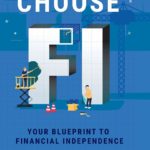
How time flies! Five years ago this Sunday — Nov. 3, 2014 — the Financial Independence Hub [aka “The Hub”] was launched. From the start the idea was to publish a blog every business day, 52 weeks a year. Thanks to a wide variety of guest bloggers and other contributors, that has been achieved: as of this writing, the Hub had published almost 1,700 blogs.
For those curious, this link will take you to the very first Hub blog, which outlined the planned direction. From the get-go we tried to make a distinction between traditional full-stop Retirement and Findependence, which of course is the contraction for Financial Independence. The related book is Findependence Day (available in both Canadian and US editions).
Findependence is different from Retirement
Even some of the republished blogs the past week indicate how much the term Financial Independence has caught on, although sadly, the term Findependence less so. Just a few days ago, regular Hub contributor Mark Seed published a blog on Strive for Financial Independence not Early Retirement. (We’re working on getting him to use the term Findependence but Rome wasn’t built in a day!)
I wrote much the same thing soon after the Hub was launched in 2014: Why Financial Independence is a better term than Retirement.
I may as well take this opportunity to clarify a few things about how the Hub operates. First though, we’d like to thank our advertisers, some of which (like Vanguard) have been with us since almost the beginning. It’s that kind of support that means the Hub remains free to users, who by now realize that most Hub blogs publish around 9:10 am, with a daily digest going out around 10 am.
Where the Hub’s content comes from
Why daily content? I guess it goes back to my days as a newspaper reporter and columnist, when my personal motto was “A story a day keeps the editor away.” Of course, it wouldn’t be much of a Semi-Retirement if I had to write a blog for the Hub every day all by myself so from the get-go we were open to guest blogs. An early supporter was Robb (and Marie) Engen of Boomer & Echo: skip over to the Hub’s search function and you’ll find dozens of stories by them. And by the way, that search tool can be very useful in accessing any of the 1700 blogs or so that the Hub has published: they’re still there; you just have to retrieve them with the tool.
Also early in giving us permission to republish blogs were Patrick McKeough of The Successful Investor, Adrian Mastracci of KCM Wealth Management, Mike Drak, my co-author on Victory Lap Retirement, Billy and Akaisha Kaderli of RetireEarlyLifestyle.com and many more. Just this year we’ve added a few more excellent bloggers: Mark Seed of MyOwn Advisor, Michael Wiener of Michael James on Money, Dale Roberts of Cut the Crap Investing, Fritz Gilbert, the Plutus award winning blogger behind Retirement Manifesto and a few more I hope I’ve not forgotten.
I can hear critics questioning the rationale of this republishing approach: all I can say is that you can consider it sort of the Greatest Hits of Financial Independence, given that our goal has always been to be — as you can see in our slogan elsewhere on this site — North America’s Portal to Financial Independence. We are chiefly an aggregator, although there is also original content.
Yes, I try to write a blog most weeks, though as regular readers may realize, they tend to be “throws” — summaries of paid columns or blogs I’ve written elsewhere, including MoneySense.ca, the Financial Post, Motley Fool Canada, the Globe & Mail on occasion, and Money.ca. Think of it as a sort of one-stop-shopping for what I personally write, even as I retrench a bit as my Semi-Retirement unfolds. (I’ll be 67 in April). In a way, the outside revenue I get from writing for the mass media helps defray the Hub’s modest costs, and of course helps to promote the site to new readers.
Apart from republished blogs, the Hub also regularly tries to publish at least two pieces a week of fresh content written by a variety of other contributors: financial advisors and other investment professionals, occasionally marketers or firms representing a cross-section of the financial services industry.
The Hub’s 6 categories for the Human Financial Life Cycle
We try to publish a wide selection of topics corresponding to the human financial life cycle: if you’ve not noticed, take a look at the blue menu near the top of the site and you’ll see that our blogs are categorized in six sections. We start with young people (Millennials) who are just getting started in their financial lives. So we start with Debt and Frugality, followed by Family Formation and Housing: they will be interested in topics like real estate and buying their first home, mortgages, interest rates, credit cards etc. From almost the Hub’s inception, Zoocasa.com’s Penelope Graham has contributed excellent articles monthly on the real estate industry. Continue Reading…









